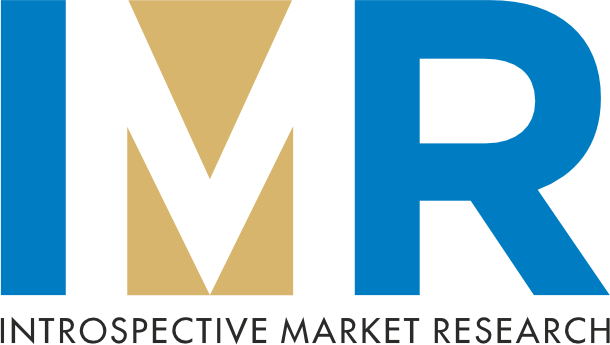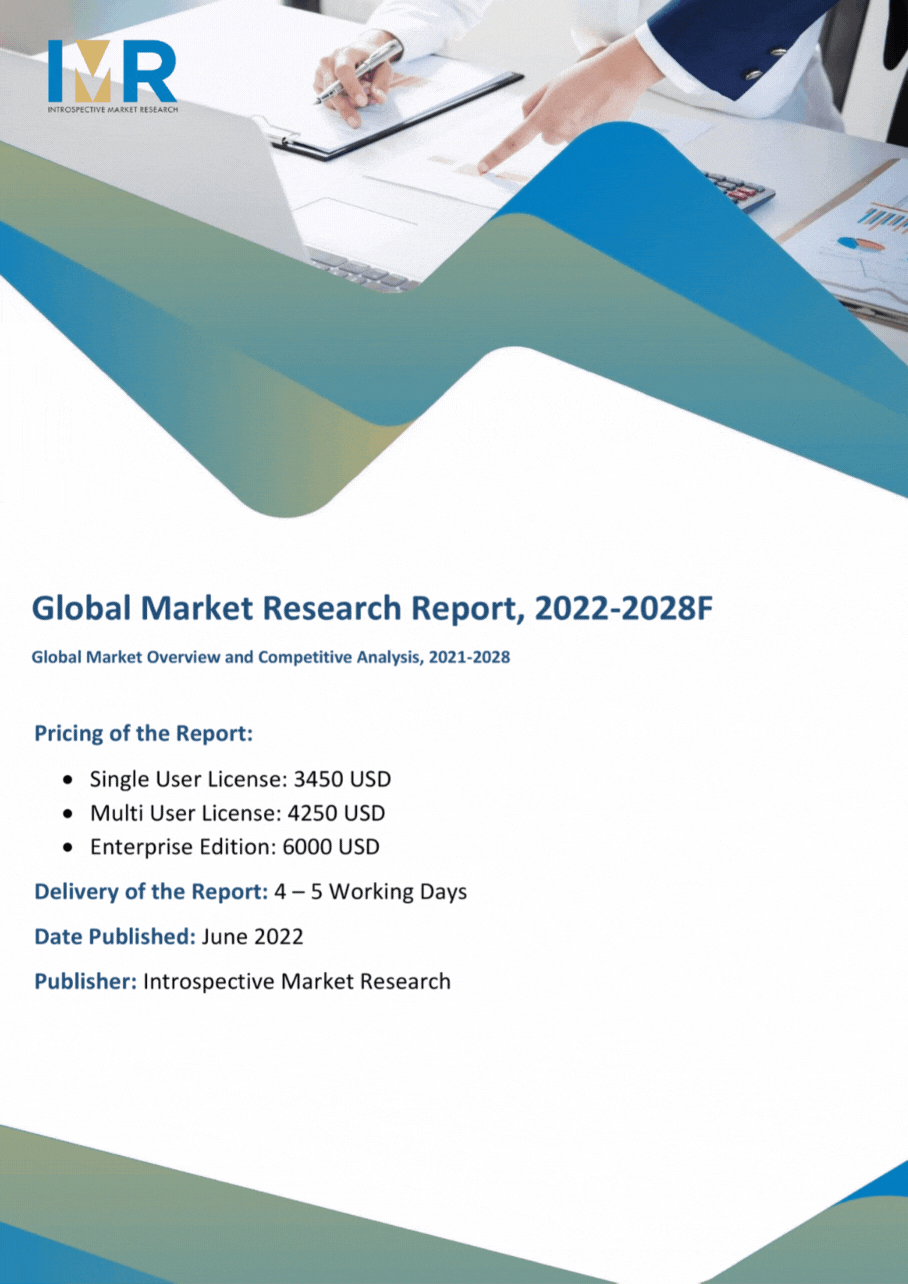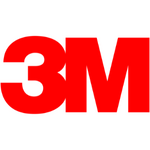Global Chocolate Milk Market Overview
The Global Chocolate Milk Market was valued at USD 8.52 Billion in 2021, and it is projected to reach USD 11.76 Billion by 2028, registering an estimated CAGR of 4.70% during 2021- 2028.
Chocolate milk is basically produced by combining milk, chocolate, and various sweeteners such as high-fructose corn syrups or sugars. Chocolate milk is rich in leucine, nutrients, and vitamins A, B1, B6 which is very crucial in maintaining and building strong muscles, and is beneficial for the bone health. Being a substitute for unsweetened milk, and a convenient source of energy and nutrition, chocolate milk market is expected to grow at pace in the forecasted years. The consumption of chocolate milk which is enriched with cocoa flavanols improves the brain’s blood flow; also helps in boosting the memory, smoothening and in hydrating the skin, and improving immune system. The sweet taste receptors with all those added benefits of chocolate milk are derived to drive the market growth in the upcoming years. However, the increasing consumer demand for natural, nutritious, convenient, and healthy on-the-go snack options is the primary element for the growth of chocolate milk market worldwide. In addition to this, the changing trends and inclination toward a healthy lifestyle are expected to drive the market growth in the forecast period.

Market Dynamics And Factors Of The Chocolate Milk Market
Drivers:
Healthy Drink Choice and Convenient Alternatives
The growing consumer demand for the nutritious, healthy and safe on-the-go snack choices are driving the chocolate milk market growth promptly. Additionally, the consumer preference for a healthier lifestyle and the evolving lifestyles of consumers are driving the market growth. Chocolate milk being available in varied flavors, imparts a quick and convenient alternative for healthy and tasty drink, not just for the children and teenagers, but also for the elder generation. Chocolate milk is also beneficial for the adults after an intense workout as it helps them retain energy, increase endurance, reduce post workout exhaustion and provide essential proteins and nutrients. Henceforth, the convenient alternative to any regular drink, and the healthy drink preference from any age group is most likely to propel the growth of chocolate milk market in the estimated years.
Restraints:
Fluctuation of Raw Material Prices and Risk of Diseases
Fluctuating raw material prices, particularly cocoa, volatility in supply of chocolate milk products, and political- instability in producing cocoa in most of the cocoa- producing nations are estimated to stifle the global chocolate milk market in the projected years. Excessive chocolate milk intake if not monitored properly, can cause cavities, obesity, and other health issues in kids. Additionally, though chocolate milk is a healthy and tasty beverage, it possesses more sugar content than the regular milk, henceforth, it should be considered more of a dessert than a beverage for adults as well as children. Extensive consumption of calories and added sugar which leads to weight gain and increase the risk of certain chronic diseases is estimated to hamper the growth of chocolate milk market in the projected years.
Opportunity:
Surge for Low Sugar and Flavoured Chocolate Milk
As consumers are focused on beverages and functional food products, and are inclined towards ready-to-drink beverages with low/ no sugar and sodium content, there is a tremendous growth opportunity for the chocolate milk market. Thus, many key players are increasing their investments in marketing and R&D to offer innovative, free from sugar and healthy chocolate milk. Furthermore, many chocolate milk manufacturing industries are bringing innovation in flavored milk by introducing with attractive packaging, increasing the emphasis on flavors, and indulgence that cater to adults in order to broaden their consumer base, which will positively impact its market growth. For Instance, in 2017, Nestle altered the sugar level and revamped its chocolate milk drink. This is a market strategy to fulfill the consumers' demand for low-sugar chocolate drinks. In 2019, it launched a low sugar product, Nesquik All Natural, in specially made recyclable paper packaging, with more cocoa.
Segmentation Analysis Of Chocolate Milk Market
By Type, the Dairy-Based Chocolate Milk segment is estimated to dominate the chocolate milk market. The fastest-growing segment recorded is non-dairy-based chocolate milk. The dairy-based chocolate milk market is facing tough competition from the protein shakes and non-dairy drinks market, worldwide. Continue marketing efforts by the dairy industry have helped adults and athletes selecting for dairy-based chocolate milk who have previously dismissed chocolate milk as a drink for children. Moreover, some of the key factors anticipated to turn the demand are growing consumer disposable income and growth in consumer awareness related to the health benefits of flavored dairy products, such as chocolate milk. Such innovation in the product category is attracting a greater number of consumers and hence aiding the market growth.
By Distribution Channel, the Supermarkets/Hypermarkets Channel is projected to dominate the market growth of chocolate milk. Chocolate Milk is used in supermarkets to increase their sales. It also helps make shoppers see more items on shelves because they can satisfy immediate cravings when they are shopping for other groceries. In supermarkets, chocolate milk is used to increase their sales. The proximity factor of these channels, especially in urban areas and metropolitan cities, provides them with an added advantage of influencing the consumer's decision to purchase the large variety of brands available in the market. Also, the wide retail visibility of products has resulted in an increasing share of supermarkets and hypermarkets.
Regional Analysis Of Chocolate Milk Market
The Asia Pacific region is estimated to dominate the chocolate milk market in the projected years. The consumer demand for natural, convenient, nutritious, and healthy on-the-go snack options is the primary element for the rapid growth of chocolate milk across Asia-Pacific region. The changing lifestyle of consumers and inclination toward a healthy lifestyle are propelling the growth of the market. Dairy-based beverages are naturally high in calcium and protein content, and, thus, are perceived as a nutritional beverage option. Hence, chocolate milk, being the healthier and convenient preference, is witnessing rising demand in Asia Pacific region. A gradual shift in the food consumption pattern of consumers and increasing demand for chocolate drinks are boosting the growth of organic chocolate drinks across Asia-Pacific region.
North American region is estimated to grow slowly in the upcoming years. In the past few years, the consumption of milk has declined in the United States due to changing dietary habits of consumers which helps to grow for the non-dairy, plant-based product, and organic products in the market. However, owing to the advanced technologies, nutrition benefits, changing lifestyles and trends and rising demand for vegan and sugar- free milk, this region is estimated to retain its sales growth in the forecasted period.
Europe region is projected to grow steadily in the estimated years. The major factor driving the chocolate milk market in Germany is the growing consumer demand for a nutritious and healthy drink coupled with curiosity to try new drinks in the country. Also, the increase in awareness regarding the disadvantages of consuming many artificial ingredients, and a shift in food consumption pattern is fueling the growth of chocolate milk market in European region over the forecast period.
Covid-19 Impact Analysis On Chocolate Milk Market
The COVID-19 pandemic has caused a positive trend within the consumption of Chocolate Milks as more people preferred home cooking and retail purchases. COVID-19 had an impact on the chocolate market when it first appeared in 2020. However, after relaxing limitations in both importing and exporting countries, the market became more stable. During the lockdown, milk chocolate consumption at home increased dramatically. Chocolate Milk market is quickly reaching its pre-COVID levels and a healthy growth rate is expected over the forecast period driven by the economic revival in most of the developing nations. However, unprecedented situations due to expected third and further waves are creating a gloomy outlook. As a result of the COVID-19 pandemic, exports of dairy products were reduced in the first quarter, particularly cheese and flavoured milk products, including chocolate milk. In addition, the lockdown nearly halted the revenue growth of the milk industry because of weak sales of value-added products, like cheese, flavored milk, curd, and yogurt, which indirectly impacted the sales of chocolate milk in the region.
Top Key Players Covered In Chocolate Milk Market
- Amul(India)
- Arla Foods (Denmark)
- Dairy Farmers of America Inc. (US)
- Dean Foods (Texas)
- Groupe Danone(France)
- Inner Mongolia Yili Industrial Group (China)
- Nestle SA (Switzerland)
- Royal FrieslandCampina (Netherlands)
- Saputo Inc (Canada)
- The Hershey Company (US)
- Maryland & Virginia Milk Producers Cooperative Association Inc. (US)
- The Coca-Cola Company (US)
- Unternehmensgruppe Theo Müller (Germany)
- Mars Incorporated (US), other major players.
Key Industry Developments In The Chocolate Milk Market
In September 2020, Nestlé expanded its range of dairy alternatives with the launch of plant-based Nesquik drink in Europe. The new ready-to-drink beverage was launched first in Spain, Portugal, and Hungary and then in other European countries. It consists of oats and peas with sustainably sourced cocoa, and it is lower in sugar than regular milk-based Nesquik.
In July 2019, FrieslandCampina launched Chocomel, a Dutch brand of chocolate-flavored milk, into the United Kingdom in a single-serving ‘to-go 250ml can.
|
Global Chocolate Milk Market |
|||
|
Base Year: |
2021 |
Forecast Period: |
2022-2028 |
|
Historical Data: |
2016 to 2020 |
Market Size in 2021: |
USD 8.52 Bn. |
|
Forecast Period 2022-28 CAGR: |
4.70% |
Market Size in 2028: |
USD 11.76 Bn. |
|
Segments Covered: |
By Type |
|
|
|
By Distribution Channel |
|
||
|
By Region |
|
||
|
Key Market Drivers: |
|
||
|
Key Market Restraints: |
|
||
|
Key Opportunities: |
|
||
|
Companies Covered in the report: |
|
||
Chapter 1: Introduction
1.1 Research Objectives
1.2 Research Methodology
1.3 Research Process
1.4 Scope and Coverage
1.4.1 Market Definition
1.4.2 Key Questions Answered
1.5 Market Segmentation
Chapter 2:Executive Summary
Chapter 3:Growth Opportunities By Segment
3.1 By Type
3.2 By Distribution Channel
Chapter 4: Market Landscape
4.1 Porter's Five Forces Analysis
4.1.1 Bargaining Power of Supplier
4.1.2 Threat of New Entrants
4.1.3 Threat of Substitutes
4.1.4 Competitive Rivalry
4.1.5 Bargaining Power Among Buyers
4.2 Industry Value Chain Analysis
4.3 Market Dynamics
4.3.1 Drivers
4.3.2 Restraints
4.3.3 Opportunities
4.5.4 Challenges
4.4 Pestle Analysis
4.5 Technological Roadmap
4.6 Regulatory Landscape
4.7 SWOT Analysis
4.8 Price Trend Analysis
4.9 Patent Analysis
4.10 Analysis of the Impact of Covid-19
4.10.1 Impact on the Overall Market
4.10.2 Impact on the Supply Chain
4.10.3 Impact on the Key Manufacturers
4.10.4 Impact on the Pricing
Chapter 5: Chocolate Milk Market by Type
5.1 Chocolate Milk Market Overview Snapshot and Growth Engine
5.2 Chocolate Milk Market Overview
5.3 Dairy-Based Chocolate Milk
5.3.1 Introduction and Market Overview
5.3.2 Historic and Forecasted Market Size (2016-2028F)
5.3.3 Key Market Trends, Growth Factors and Opportunities
5.3.4 Dairy-Based Chocolate Milk: Grographic Segmentation
5.4 Non-Dairy Based Chocolate Milk
5.4.1 Introduction and Market Overview
5.4.2 Historic and Forecasted Market Size (2016-2028F)
5.4.3 Key Market Trends, Growth Factors and Opportunities
5.4.4 Non-Dairy Based Chocolate Milk: Grographic Segmentation
Chapter 6: Chocolate Milk Market by Distribution Channel
6.1 Chocolate Milk Market Overview Snapshot and Growth Engine
6.2 Chocolate Milk Market Overview
6.3 Supermarket/Hypermarkets
6.3.1 Introduction and Market Overview
6.3.2 Historic and Forecasted Market Size (2016-2028F)
6.3.3 Key Market Trends, Growth Factors and Opportunities
6.3.4 Supermarket/Hypermarkets: Grographic Segmentation
6.4 Convenience Stores
6.4.1 Introduction and Market Overview
6.4.2 Historic and Forecasted Market Size (2016-2028F)
6.4.3 Key Market Trends, Growth Factors and Opportunities
6.4.4 Convenience Stores: Grographic Segmentation
6.5 Other Distribution Channels
6.5.1 Introduction and Market Overview
6.5.2 Historic and Forecasted Market Size (2016-2028F)
6.5.3 Key Market Trends, Growth Factors and Opportunities
6.5.4 Other Distribution Channels: Grographic Segmentation
Chapter 7: Company Profiles and Competitive Analysis
7.1 Competitive Landscape
7.1.1 Competitive Positioning
7.1.2 Chocolate Milk Sales and Market Share By Players
7.1.3 Industry BCG Matrix
7.1.4 Ansoff Matrix
7.1.5 Chocolate Milk Industry Concentration Ratio (CR5 and HHI)
7.1.6 Top 5 Chocolate Milk Players Market Share
7.1.7 Mergers and Acquisitions
7.1.8 Business Strategies By Top Players
7.2 AMUL
7.2.1 Company Overview
7.2.2 Key Executives
7.2.3 Company Snapshot
7.2.4 Operating Business Segments
7.2.5 Product Portfolio
7.2.6 Business Performance
7.2.7 Key Strategic Moves and Recent Developments
7.2.8 SWOT Analysis
7.3 ARLA FOODS
7.4 DAIRY FARMERS OF AMERICA INC.
7.5 DEAN FOODS
7.6 GROUPE DANONE
7.7 INNER MONGOLIA YILI INDUSTRIAL GROUP
7.8 NESTLE SA
7.9 ROYAL FRIESL AND CAMPINA
7.10 SAPUTO INC
7.11 THE HERSHEY COMPANY
7.12 MARYLAND & VIRGINIA MILK PRODUCERS COOPERATIVE ASSOCIATION INC
7.13 THE COCA-COLA COMPANY
7.14 UNTERNEHMENSGRUPPE THEO MÜLLER
7.15 MARS INCORPORATED
7.16 OTHER MAJOR PLAYERS
Chapter 8: Global Chocolate Milk Market Analysis, Insights and Forecast, 2016-2028
8.1 Market Overview
8.2 Historic and Forecasted Market Size By Type
8.2.1 Dairy-Based Chocolate Milk
8.2.2 Non-Dairy Based Chocolate Milk
8.3 Historic and Forecasted Market Size By Distribution Channel
8.3.1 Supermarket/Hypermarkets
8.3.2 Convenience Stores
8.3.3 Other Distribution Channels
Chapter 9: North America Chocolate Milk Market Analysis, Insights and Forecast, 2016-2028
9.1 Key Market Trends, Growth Factors and Opportunities
9.2 Impact of Covid-19
9.3 Key Players
9.4 Key Market Trends, Growth Factors and Opportunities
9.4 Historic and Forecasted Market Size By Type
9.4.1 Dairy-Based Chocolate Milk
9.4.2 Non-Dairy Based Chocolate Milk
9.5 Historic and Forecasted Market Size By Distribution Channel
9.5.1 Supermarket/Hypermarkets
9.5.2 Convenience Stores
9.5.3 Other Distribution Channels
9.6 Historic and Forecast Market Size by Country
9.6.1 U.S.
9.6.2 Canada
9.6.3 Mexico
Chapter 10: Europe Chocolate Milk Market Analysis, Insights and Forecast, 2016-2028
10.1 Key Market Trends, Growth Factors and Opportunities
10.2 Impact of Covid-19
10.3 Key Players
10.4 Key Market Trends, Growth Factors and Opportunities
10.4 Historic and Forecasted Market Size By Type
10.4.1 Dairy-Based Chocolate Milk
10.4.2 Non-Dairy Based Chocolate Milk
10.5 Historic and Forecasted Market Size By Distribution Channel
10.5.1 Supermarket/Hypermarkets
10.5.2 Convenience Stores
10.5.3 Other Distribution Channels
10.6 Historic and Forecast Market Size by Country
10.6.1 Germany
10.6.2 U.K.
10.6.3 France
10.6.4 Italy
10.6.5 Russia
10.6.6 Spain
10.6.7 Rest of Europe
Chapter 11: Asia-Pacific Chocolate Milk Market Analysis, Insights and Forecast, 2016-2028
11.1 Key Market Trends, Growth Factors and Opportunities
11.2 Impact of Covid-19
11.3 Key Players
11.4 Key Market Trends, Growth Factors and Opportunities
11.4 Historic and Forecasted Market Size By Type
11.4.1 Dairy-Based Chocolate Milk
11.4.2 Non-Dairy Based Chocolate Milk
11.5 Historic and Forecasted Market Size By Distribution Channel
11.5.1 Supermarket/Hypermarkets
11.5.2 Convenience Stores
11.5.3 Other Distribution Channels
11.6 Historic and Forecast Market Size by Country
11.6.1 China
11.6.2 India
11.6.3 Japan
11.6.4 Singapore
11.6.5 Australia
11.6.6 New Zealand
11.6.7 Rest of APAC
Chapter 12: Middle East & Africa Chocolate Milk Market Analysis, Insights and Forecast, 2016-2028
12.1 Key Market Trends, Growth Factors and Opportunities
12.2 Impact of Covid-19
12.3 Key Players
12.4 Key Market Trends, Growth Factors and Opportunities
12.4 Historic and Forecasted Market Size By Type
12.4.1 Dairy-Based Chocolate Milk
12.4.2 Non-Dairy Based Chocolate Milk
12.5 Historic and Forecasted Market Size By Distribution Channel
12.5.1 Supermarket/Hypermarkets
12.5.2 Convenience Stores
12.5.3 Other Distribution Channels
12.6 Historic and Forecast Market Size by Country
12.6.1 Turkey
12.6.2 Saudi Arabia
12.6.3 Iran
12.6.4 UAE
12.6.5 Africa
12.6.6 Rest of MEA
Chapter 13: South America Chocolate Milk Market Analysis, Insights and Forecast, 2016-2028
13.1 Key Market Trends, Growth Factors and Opportunities
13.2 Impact of Covid-19
13.3 Key Players
13.4 Key Market Trends, Growth Factors and Opportunities
13.4 Historic and Forecasted Market Size By Type
13.4.1 Dairy-Based Chocolate Milk
13.4.2 Non-Dairy Based Chocolate Milk
13.5 Historic and Forecasted Market Size By Distribution Channel
13.5.1 Supermarket/Hypermarkets
13.5.2 Convenience Stores
13.5.3 Other Distribution Channels
13.6 Historic and Forecast Market Size by Country
13.6.1 Brazil
13.6.2 Argentina
13.6.3 Rest of SA
Chapter 14 Investment Analysis
Chapter 15 Analyst Viewpoint and Conclusion
|
Global Chocolate Milk Market |
|||
|
Base Year: |
2021 |
Forecast Period: |
2022-2028 |
|
Historical Data: |
2016 to 2020 |
Market Size in 2021: |
USD 8.52 Bn. |
|
Forecast Period 2022-28 CAGR: |
4.70% |
Market Size in 2028: |
USD 11.76 Bn. |
|
Segments Covered: |
By Type |
|
|
|
By Distribution Channel |
|
||
|
By Region |
|
||
|
Key Market Drivers: |
|
||
|
Key Market Restraints: |
|
||
|
Key Opportunities: |
|
||
|
Companies Covered in the report: |
|
||
LIST OF TABLES
TABLE 001. EXECUTIVE SUMMARY
TABLE 002. CHOCOLATE MILK MARKET BARGAINING POWER OF SUPPLIERS
TABLE 003. CHOCOLATE MILK MARKET BARGAINING POWER OF CUSTOMERS
TABLE 004. CHOCOLATE MILK MARKET COMPETITIVE RIVALRY
TABLE 005. CHOCOLATE MILK MARKET THREAT OF NEW ENTRANTS
TABLE 006. CHOCOLATE MILK MARKET THREAT OF SUBSTITUTES
TABLE 007. CHOCOLATE MILK MARKET BY TYPE
TABLE 008. DAIRY-BASED CHOCOLATE MILK MARKET OVERVIEW (2016-2028)
TABLE 009. NON-DAIRY BASED CHOCOLATE MILK MARKET OVERVIEW (2016-2028)
TABLE 010. CHOCOLATE MILK MARKET BY DISTRIBUTION CHANNEL
TABLE 011. SUPERMARKET/HYPERMARKETS MARKET OVERVIEW (2016-2028)
TABLE 012. CONVENIENCE STORES MARKET OVERVIEW (2016-2028)
TABLE 013. OTHER DISTRIBUTION CHANNELS MARKET OVERVIEW (2016-2028)
TABLE 014. NORTH AMERICA CHOCOLATE MILK MARKET, BY TYPE (2016-2028)
TABLE 015. NORTH AMERICA CHOCOLATE MILK MARKET, BY DISTRIBUTION CHANNEL (2016-2028)
TABLE 016. N CHOCOLATE MILK MARKET, BY COUNTRY (2016-2028)
TABLE 017. EUROPE CHOCOLATE MILK MARKET, BY TYPE (2016-2028)
TABLE 018. EUROPE CHOCOLATE MILK MARKET, BY DISTRIBUTION CHANNEL (2016-2028)
TABLE 019. CHOCOLATE MILK MARKET, BY COUNTRY (2016-2028)
TABLE 020. ASIA PACIFIC CHOCOLATE MILK MARKET, BY TYPE (2016-2028)
TABLE 021. ASIA PACIFIC CHOCOLATE MILK MARKET, BY DISTRIBUTION CHANNEL (2016-2028)
TABLE 022. CHOCOLATE MILK MARKET, BY COUNTRY (2016-2028)
TABLE 023. MIDDLE EAST & AFRICA CHOCOLATE MILK MARKET, BY TYPE (2016-2028)
TABLE 024. MIDDLE EAST & AFRICA CHOCOLATE MILK MARKET, BY DISTRIBUTION CHANNEL (2016-2028)
TABLE 025. CHOCOLATE MILK MARKET, BY COUNTRY (2016-2028)
TABLE 026. SOUTH AMERICA CHOCOLATE MILK MARKET, BY TYPE (2016-2028)
TABLE 027. SOUTH AMERICA CHOCOLATE MILK MARKET, BY DISTRIBUTION CHANNEL (2016-2028)
TABLE 028. CHOCOLATE MILK MARKET, BY COUNTRY (2016-2028)
TABLE 029. AMUL: SNAPSHOT
TABLE 030. AMUL: BUSINESS PERFORMANCE
TABLE 031. AMUL: PRODUCT PORTFOLIO
TABLE 032. AMUL: KEY STRATEGIC MOVES AND DEVELOPMENTS
TABLE 032. ARLA FOODS: SNAPSHOT
TABLE 033. ARLA FOODS: BUSINESS PERFORMANCE
TABLE 034. ARLA FOODS: PRODUCT PORTFOLIO
TABLE 035. ARLA FOODS: KEY STRATEGIC MOVES AND DEVELOPMENTS
TABLE 035. DAIRY FARMERS OF AMERICA INC.: SNAPSHOT
TABLE 036. DAIRY FARMERS OF AMERICA INC.: BUSINESS PERFORMANCE
TABLE 037. DAIRY FARMERS OF AMERICA INC.: PRODUCT PORTFOLIO
TABLE 038. DAIRY FARMERS OF AMERICA INC.: KEY STRATEGIC MOVES AND DEVELOPMENTS
TABLE 038. DEAN FOODS: SNAPSHOT
TABLE 039. DEAN FOODS: BUSINESS PERFORMANCE
TABLE 040. DEAN FOODS: PRODUCT PORTFOLIO
TABLE 041. DEAN FOODS: KEY STRATEGIC MOVES AND DEVELOPMENTS
TABLE 041. GROUPE DANONE: SNAPSHOT
TABLE 042. GROUPE DANONE: BUSINESS PERFORMANCE
TABLE 043. GROUPE DANONE: PRODUCT PORTFOLIO
TABLE 044. GROUPE DANONE: KEY STRATEGIC MOVES AND DEVELOPMENTS
TABLE 044. INNER MONGOLIA YILI INDUSTRIAL GROUP: SNAPSHOT
TABLE 045. INNER MONGOLIA YILI INDUSTRIAL GROUP: BUSINESS PERFORMANCE
TABLE 046. INNER MONGOLIA YILI INDUSTRIAL GROUP: PRODUCT PORTFOLIO
TABLE 047. INNER MONGOLIA YILI INDUSTRIAL GROUP: KEY STRATEGIC MOVES AND DEVELOPMENTS
TABLE 047. NESTLE SA: SNAPSHOT
TABLE 048. NESTLE SA: BUSINESS PERFORMANCE
TABLE 049. NESTLE SA: PRODUCT PORTFOLIO
TABLE 050. NESTLE SA: KEY STRATEGIC MOVES AND DEVELOPMENTS
TABLE 050. ROYAL FRIESL AND CAMPINA: SNAPSHOT
TABLE 051. ROYAL FRIESL AND CAMPINA: BUSINESS PERFORMANCE
TABLE 052. ROYAL FRIESL AND CAMPINA: PRODUCT PORTFOLIO
TABLE 053. ROYAL FRIESL AND CAMPINA: KEY STRATEGIC MOVES AND DEVELOPMENTS
TABLE 053. SAPUTO INC: SNAPSHOT
TABLE 054. SAPUTO INC: BUSINESS PERFORMANCE
TABLE 055. SAPUTO INC: PRODUCT PORTFOLIO
TABLE 056. SAPUTO INC: KEY STRATEGIC MOVES AND DEVELOPMENTS
TABLE 056. THE HERSHEY COMPANY: SNAPSHOT
TABLE 057. THE HERSHEY COMPANY: BUSINESS PERFORMANCE
TABLE 058. THE HERSHEY COMPANY: PRODUCT PORTFOLIO
TABLE 059. THE HERSHEY COMPANY: KEY STRATEGIC MOVES AND DEVELOPMENTS
TABLE 059. MARYLAND & VIRGINIA MILK PRODUCERS COOPERATIVE ASSOCIATION INC: SNAPSHOT
TABLE 060. MARYLAND & VIRGINIA MILK PRODUCERS COOPERATIVE ASSOCIATION INC: BUSINESS PERFORMANCE
TABLE 061. MARYLAND & VIRGINIA MILK PRODUCERS COOPERATIVE ASSOCIATION INC: PRODUCT PORTFOLIO
TABLE 062. MARYLAND & VIRGINIA MILK PRODUCERS COOPERATIVE ASSOCIATION INC: KEY STRATEGIC MOVES AND DEVELOPMENTS
TABLE 062. THE COCA-COLA COMPANY: SNAPSHOT
TABLE 063. THE COCA-COLA COMPANY: BUSINESS PERFORMANCE
TABLE 064. THE COCA-COLA COMPANY: PRODUCT PORTFOLIO
TABLE 065. THE COCA-COLA COMPANY: KEY STRATEGIC MOVES AND DEVELOPMENTS
TABLE 065. UNTERNEHMENSGRUPPE THEO MÜLLER: SNAPSHOT
TABLE 066. UNTERNEHMENSGRUPPE THEO MÜLLER: BUSINESS PERFORMANCE
TABLE 067. UNTERNEHMENSGRUPPE THEO MÜLLER: PRODUCT PORTFOLIO
TABLE 068. UNTERNEHMENSGRUPPE THEO MÜLLER: KEY STRATEGIC MOVES AND DEVELOPMENTS
TABLE 068. MARS INCORPORATED: SNAPSHOT
TABLE 069. MARS INCORPORATED: BUSINESS PERFORMANCE
TABLE 070. MARS INCORPORATED: PRODUCT PORTFOLIO
TABLE 071. MARS INCORPORATED: KEY STRATEGIC MOVES AND DEVELOPMENTS
TABLE 071. OTHER MAJOR PLAYERS: SNAPSHOT
TABLE 072. OTHER MAJOR PLAYERS: BUSINESS PERFORMANCE
TABLE 073. OTHER MAJOR PLAYERS: PRODUCT PORTFOLIO
TABLE 074. OTHER MAJOR PLAYERS: KEY STRATEGIC MOVES AND DEVELOPMENTS
LIST OF FIGURES
FIGURE 001. YEARS CONSIDERED FOR ANALYSIS
FIGURE 002. SCOPE OF THE STUDY
FIGURE 003. CHOCOLATE MILK MARKET OVERVIEW BY REGIONS
FIGURE 004. PORTER'S FIVE FORCES ANALYSIS
FIGURE 005. BARGAINING POWER OF SUPPLIERS
FIGURE 006. COMPETITIVE RIVALRYFIGURE 007. THREAT OF NEW ENTRANTS
FIGURE 008. THREAT OF SUBSTITUTES
FIGURE 009. VALUE CHAIN ANALYSIS
FIGURE 010. PESTLE ANALYSIS
FIGURE 011. CHOCOLATE MILK MARKET OVERVIEW BY TYPE
FIGURE 012. DAIRY-BASED CHOCOLATE MILK MARKET OVERVIEW (2016-2028)
FIGURE 013. NON-DAIRY BASED CHOCOLATE MILK MARKET OVERVIEW (2016-2028)
FIGURE 014. CHOCOLATE MILK MARKET OVERVIEW BY DISTRIBUTION CHANNEL
FIGURE 015. SUPERMARKET/HYPERMARKETS MARKET OVERVIEW (2016-2028)
FIGURE 016. CONVENIENCE STORES MARKET OVERVIEW (2016-2028)
FIGURE 017. OTHER DISTRIBUTION CHANNELS MARKET OVERVIEW (2016-2028)
FIGURE 018. NORTH AMERICA CHOCOLATE MILK MARKET OVERVIEW BY COUNTRY (2016-2028)
FIGURE 019. EUROPE CHOCOLATE MILK MARKET OVERVIEW BY COUNTRY (2016-2028)
FIGURE 020. ASIA PACIFIC CHOCOLATE MILK MARKET OVERVIEW BY COUNTRY (2016-2028)
FIGURE 021. MIDDLE EAST & AFRICA CHOCOLATE MILK MARKET OVERVIEW BY COUNTRY (2016-2028)
FIGURE 022. SOUTH AMERICA CHOCOLATE MILK MARKET OVERVIEW BY COUNTRY (2016-2028)
Frequently Asked Questions :
The forecast period in the Chocolate Milk market research report is 2022-2028.
Amul (India), Arla Foods (Denmark), Dairy Farmers of America Inc. (US), Dean Foods (Texas), Groupe Danone (France), Inner Mongolia Yili Industrial Group (China), Nestle SA (Switzerland), Royal FrieslandCampina (Netherlands), Saputo Inc (Canada), The Hershey Company (US), Maryland & Virginia Milk Producers Cooperative Association Inc. (US), The Coca-Cola Company (US), Unternehmensgruppe Theo Müller (Germany), Mars Incorporated (US), and Other major players.
The Chocolate Milk market is segmented into Type, Distribution Channel, region. By Type, the market is categorized into Dairy-Based Chocolate Milk, Non-Dairy Based Chocolate Milk. By Distribution Channel, the market is categorized into Supermarket/ Hypermarkets, Convenience Stores, Other Distribution Channels. By region, it is analyzed across North America (U.S.; Canada; Mexico), Europe (Germany; U.K.; France; Italy; Russia; Spain etc.), Asia-Pacific (China; India; Japan; Southeast Asia etc.), South America (Brazil; Argentina etc.), Middle East & Africa (Saudi Arabia; South Africa etc.).
Chocolate milk is basically produced by combining milk, chocolate, and various sweeteners such as high-fructose corn syrups or sugars.
The Chocolate Milk Market was valued at USD 8.52 Billion in 2021 and is projected to reach USD 11.76 Billion by 2028, growing at a CAGR of 4.70% from 2022 to 2028.


































